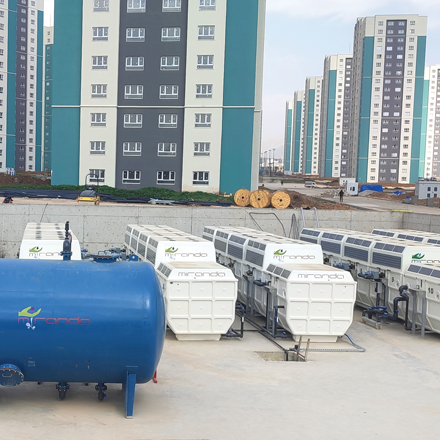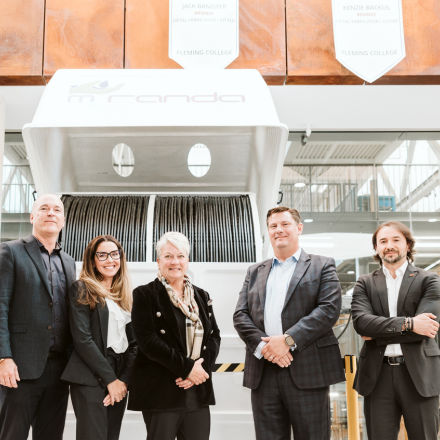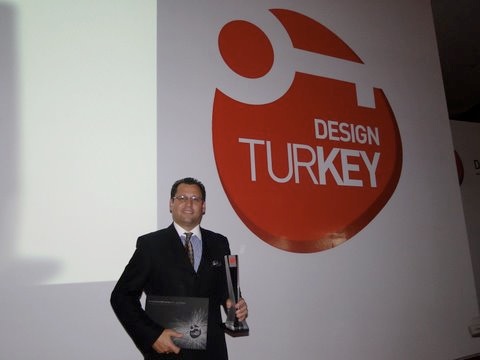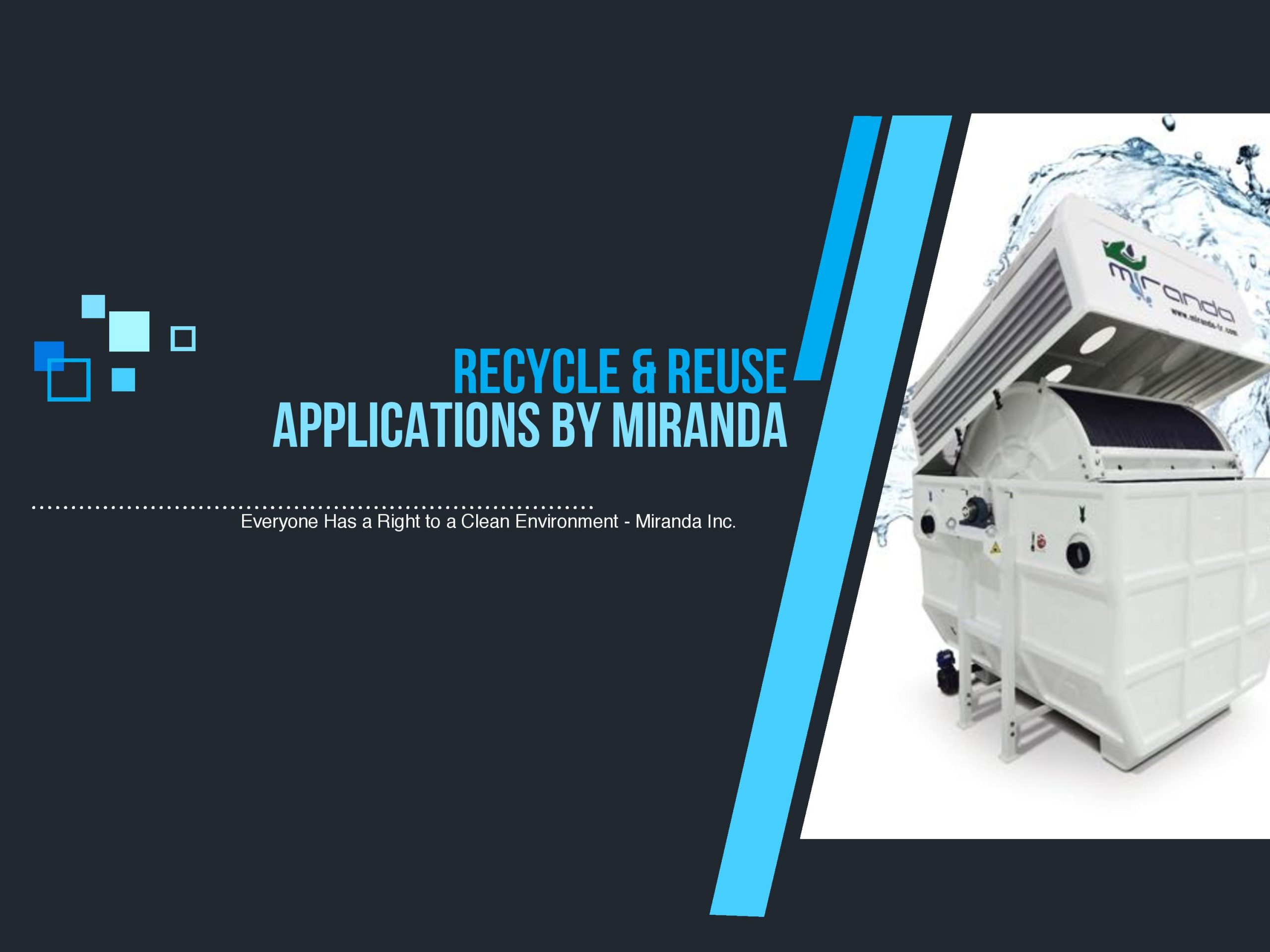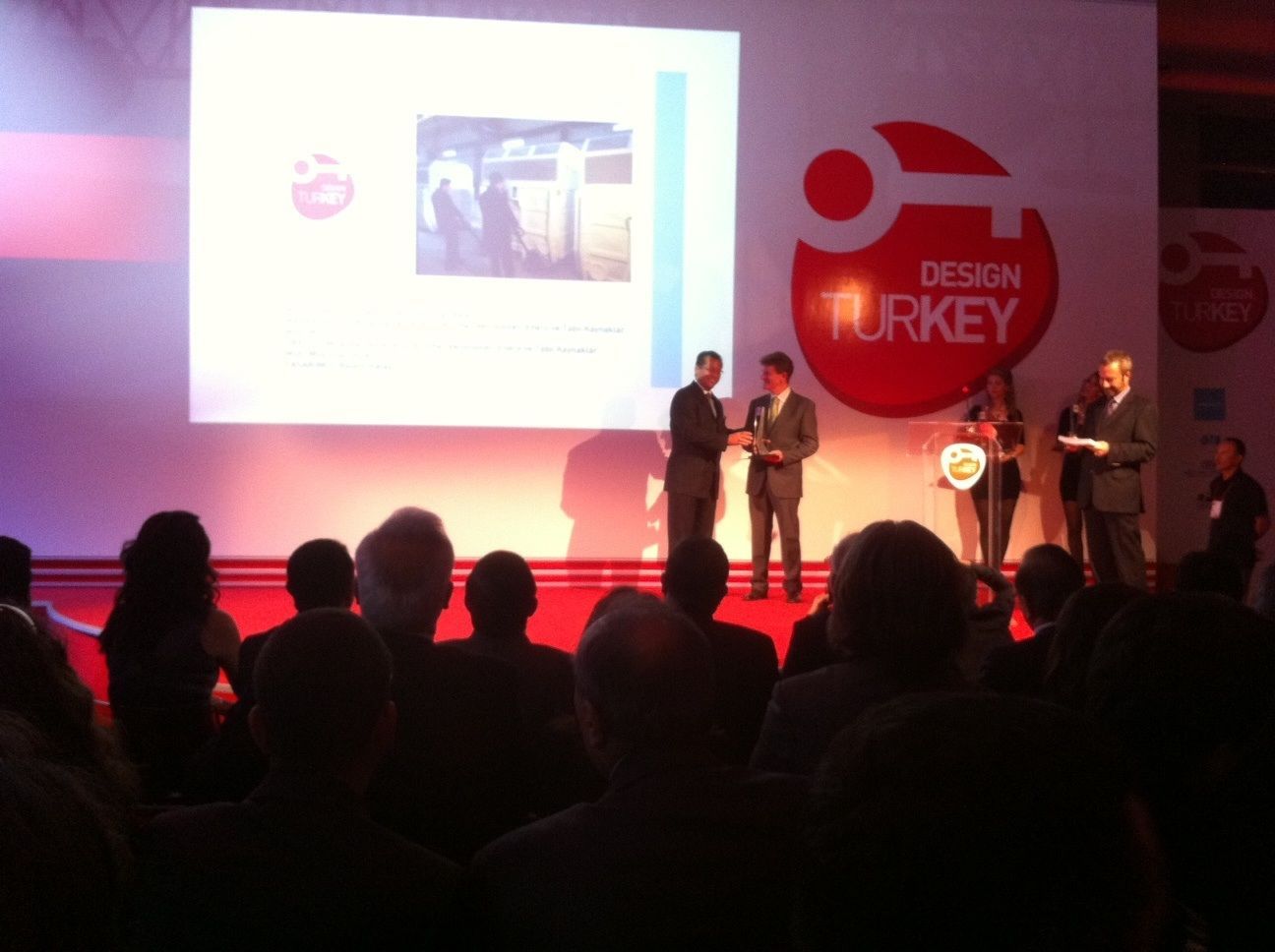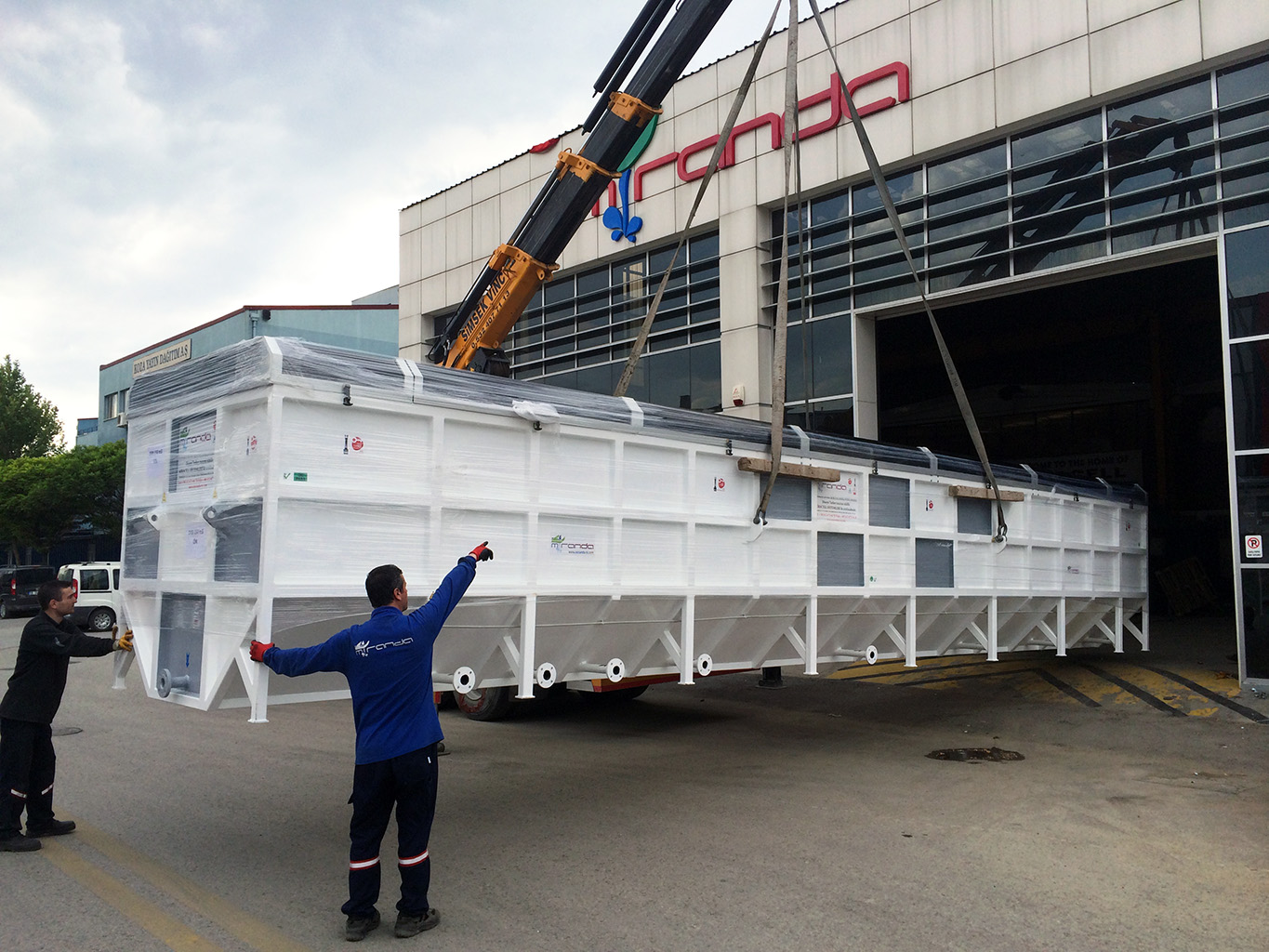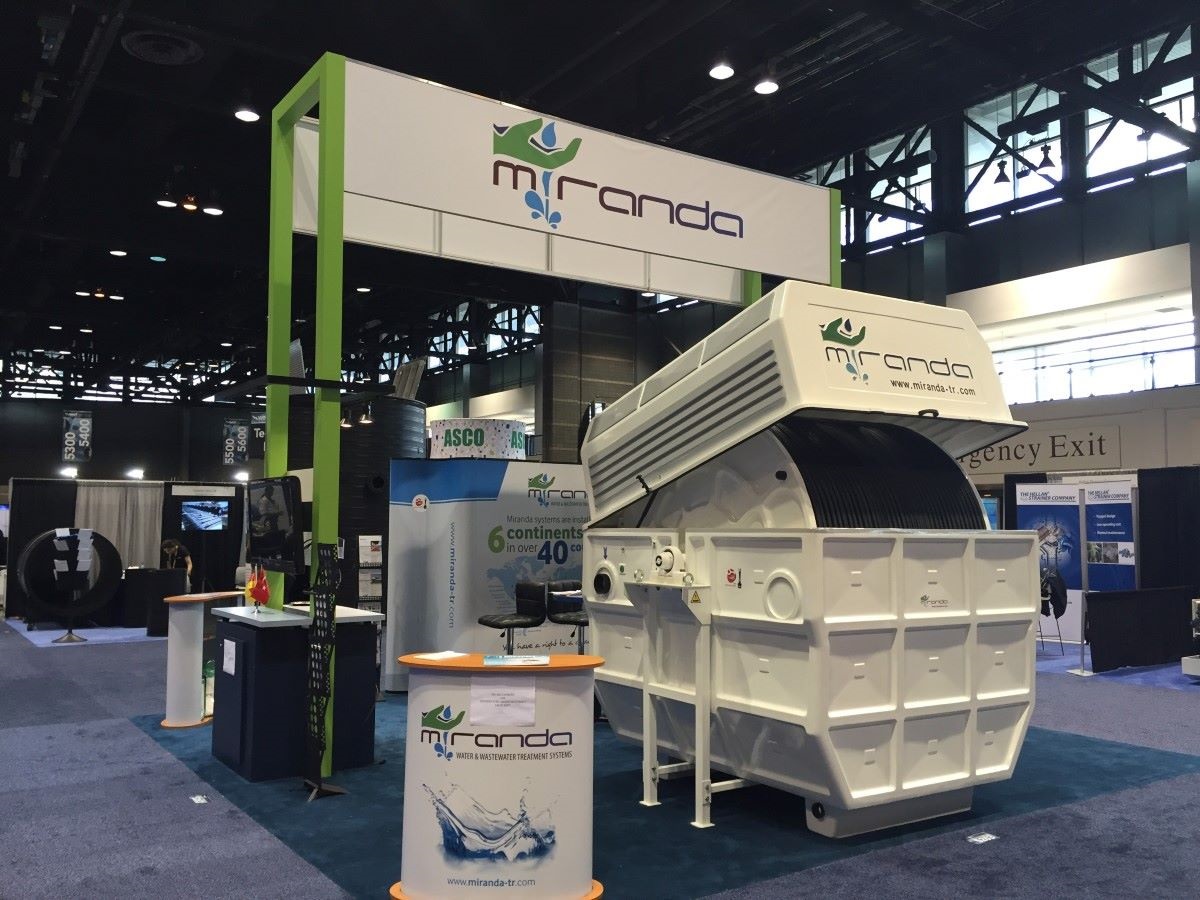By Michael Skinner CEO, Miranda Water Technologies.
Executive Summary:
Wastewater treatment is essential for protecting public health, preserving water resources, and maintaining environmental quality. Centralized water treatment plants have historically been the predominant approach for managing wastewater in urban and their adjacent rural areas. However, these plants face challenges related to energy consumption, infrastructure costs, and vulnerability to climate change and extreme weather events. In response to these challenges, decentralized wastewater treatment systems, such as Miranda Water Technology Solutions Miracell®, have emerged as a promising alternative.
Miracell® represents a decentralized RBC wastewater system created by Miranda Water Technology Solutions, a globally recognized leader in innovative water treatment solutions. With over 1,200 Miracell® deployments across more than 40 countries, Miranda has continuously enhanced its solutions through feedback obtained from various unique and diverse implementations. In contrast to centralized plants, which depend on large-scale infrastructure and extensive piping networks, Miracell® processes wastewater locally, either on-site or within small clusters of properties. This whitepaper delves into the advantages of Miracell® over centralized water treatment plants, focusing on its environmental, economic, social, and technological merits.
Our modular approach also enables waste processing directly at the point of origin, resulting in substantial cost reductions for communities and taxpayers. The environmental and financial burdens associated with transporting wastewater over long distances, including the lasting environmental effects of soil extraction and potentially extended expropriation processes, are significantly minimized.
Environmental Benefits:
Miracell® offers several environmental advantages over centralized water treatment plants:
Reduced Energy Consumption:
Centralized treatment plants require significant energy inputs for pumping, aeration, and other treatment processes, including the energy required to transport wastewater over long distances.
Miracell® minimizes energy consumption by treating wastewater locally, reducing the need for extensive pumping and transport infrastructure.
The energy savings associated with Miracell® contribute to lower greenhouse gas emissions and mitigate the environmental impact of wastewater treatment.
Reduction in excavation:
By eliminating extensive piping installations and associated earthworks, Miracell® solutions contribute to mitigating soil erosion impacts, crucial in preserving vital topsoil for plant growth and soil fertility. Additionally, habitat destruction can occur due to the removal of vegetation and disruption of natural habitats, leading to adverse effects on local plant and animal life resulting in biodiversity loss. Moreover, the decrease in soil extraction diminishes carbon sequestration loss as soil acts as a significant reservoir for carbon storage. Disturbing the soil through extraction releases stored carbon into the atmosphere, contributing to greenhouse gas emissions and worsening climate change. Furthermore, soil extraction may disrupt natural hydrological processes, such as water infiltration and groundwater recharge, impacting local water availability and heightening the risk of flooding and droughts in surrounding areas.
Enhanced Nutrient Recycling:
Miracell® facilitates the recovery of nutrients such as nitrogen and phosphorus from wastewater, for reuse in agriculture or landscaping.
By capturing and recycling these valuable nutrients, Miracell® supports a more sustainable approach to wastewater management and reduces the environmental impacts associated with nutrient pollution in water bodies.
Nutrient recycling also helps to conserve finite resources and minimize the reliance on synthetic fertilizers, which can have adverse effects on soil and water quality.
Resilience to Climate Change:
Climate change is expected to increase the frequency and intensity of extreme weather events, which can disrupt centralized water treatment infrastructure.
Miracell®, being decentralized and modular in design, is more resilient to such disruptions, ensuring continued wastewater treatment even in the face of extreme weather events.
This resilience enhances community preparedness and adaptation to climate-related risks, safeguarding public health and environmental quality in the long term.
Economic Benefits:
Miracell® offers several economic advantages over centralized treatment plants:
Lower Capital Costs:
The upfront capital investment required for Miracell® is significantly lower than that of centralized treatment plants.
This is particularly beneficial for small communities or rural areas with limited financial resources, as Miracell® can be implemented incrementally to meet growing wastewater treatment needs.
The lower capital costs associated with Miracell® enable cost-effective solutions for wastewater management, enhancing affordability and accessibility for communities of all sizes.
Reduced Operation and Maintenance Costs:
Miracell® typically has lower operation and maintenance costs compared to centralized plants.
With fewer components and simpler processes, Miracell® requires less manpower and fewer resources to operate and maintain, resulting in long-term cost savings for municipalities and utility providers.
The reduced operational costs associated with Miracell® translate into lower utility bills for consumers, making wastewater treatment more affordable and sustainable in the long term.
Avoided Infrastructure Upgrades:
Centralized treatment plants often require expensive infrastructure upgrades to accommodate population growth or regulatory changes.
Miracell® offers a scalable solution that can be easily expanded or modified to meet changing wastewater treatment requirements, minimizing the need for costly infrastructure upgrades over time.
The flexibility and adaptability of Miracell® help to future-proof wastewater management infrastructure, ensuring that communities can meet evolving needs and regulatory standards without incurring significant additional costs.
Economic Development Opportunities:
Miracell® can stimulate economic development by creating opportunities for local businesses and contractors involved in system installation, operation, and maintenance.
By decentralizing wastewater treatment infrastructure, communities can support local job creation and economic growth while improving environmental and public health outcomes.
The economic benefits of Miracell® extend beyond cost savings to include job creation, revenue generation, and enhanced community resilience and prosperity.
Social Benefits:
Miracell® offers several social benefits that contribute to improved quality of life and community well-being, including:
Enhanced Public Health Protection:
By treating wastewater locally, Miracell® reduces the risk of pathogen transmission and contamination of water sources.
This safeguards public health and reduces the incidence of waterborne diseases, particularly in rural or underserved areas where access to centralized treatment facilities may be limited.
The improved public health outcomes associated with Miracell® enhance community well-being and productivity, reducing healthcare costs and improving overall quality of life.
Community Engagement and Ownership:
Miracell® promotes community engagement and ownership of wastewater management practices by involving local stakeholders in the planning, implementation, and operation of treatment systems.
By empowering communities to take responsibility for their wastewater treatment needs, Miracell® fosters a sense of pride, ownership, and cooperation among residents.
Community involvement in wastewater management decision-making enhances transparency, accountability, and trust, strengthening social cohesion and resilience in the face of environmental challenges.
Preservation of Natural Resources:
By minimizing the environmental impacts associated with centralized treatment plants, Miracell® helps preserve natural resources such as water bodies, land, and ecosystems.
By protecting these valuable resources, Miracell® contributes to the long-term sustainability and resilience of communities, supporting ecological balance and biodiversity.
The preservation of natural resources enhances ecosystem services, such as water purification, flood control, and habitat provision, which are essential for human well-being and environmental sustainability.
Technological Advancements:
Miracell® incorporates advanced technology and innovation to improve wastewater treatment efficiency, reliability, and performance. Key technological features of Miracell® include:
Rotating Biological Contactor (RBC) Design:
Miracell® utilizes RBC technology to provide highly efficient biological treatment of wastewater.
The custom design of the rotating discs in the Miracell® RBC units create a larger surface area for microbial growth, facilitating the breakdown of organic matter and pollutants.
This innovative design ensures robust and reliable performance, even under varying flow conditions and organic loads.
Modular and Scalable Configuration:
Miracell® is ingeniously crafted as a modular system, meticulously engineered to offer effortless customization and expansion, precisely tailored to suit the unique requirements of any given site.
Our innovative interconnected modular design empowers an interlinked deployment of systems, neatly housed within 50 M3 (50,000) liter per day modules. This ingenious layout also ensures operational redundancy and continuity. Should a module encounter an unexpected interruption, it can seamlessly be detached from the line for swift repairs, allowing the remaining systems to seamlessly purify wastewater without disruption.
Moreover, the adaptability of our modular design knows no bounds, enabling flexible installations across a spectrum of settings. Whether it’s a cozy cluster of 40 homes or a sprawling community of 1,500 residences, Miracell® effortlessly scales to meet diverse demands.
This inherent scalability renders Miracell® an ideal solution for a myriad of applications, spanning from remote rural communities to bustling urban developments. With tailored solutions for various wastewater treatment needs, Miracell® stands as a beacon of innovation, ensuring sustainable sanitation solutions for communities of all sizes.
Remote Monitoring and Control:
Miracell® incorporates advanced monitoring and control systems to optimize performance and efficiency.
Remote monitoring capabilities allow operators to track system performance in real time, identify potential issues, and take proactive measures to ensure optimal operation.
This remote monitoring and control functionality enhances system reliability and reduces the need for on-site maintenance, minimizing downtime and maximizing treatment capacity.
Case Studies and Real-World Applications:
Miracell® has been successfully implemented in 40 countries in various real-world applications, demonstrating its effectiveness and versatility in addressing diverse wastewater treatment challenges. Case studies of Miracell® installations include:
Rural Communities:
Miracell® has been deployed in rural communities to provide cost-effective wastewater treatment solutions for decentralized settings.
In rural areas with scattered populations and limited infrastructure, Miracell® offers a practical and sustainable alternative to centralized treatment plants.
Case studies demonstrate the successful implementation of Miracell® in rural communities, improving water quality, protecting public health, and supporting economic development.
Residential Developments:
Miracell® has been installed in residential developments to provide on-site wastewater treatment for small communities of 40 homes up to larger communities of 1,500 homes.
In residential settings where land is limited for a traditional septic or connection to centralized sewer systems is impractical, Miracell® offers a compact and efficient solution for wastewater management.
Case studies highlight the benefits of Miracell® in residential developments, including reduced environmental impact, lower operating costs, and improved quality of life for residents.
Industrial Applications:
Miracell® has been used in industrial applications to treat wastewater generated by manufacturing processes, food production, and other industrial activities.
In industrial settings where wastewater contains high concentrations of organic pollutants Miracell® provides effective treatment and compliance with regulatory requirements.
Case studies demonstrate the successful implementation of Miracell® in industrial applications, reducing environmental impact, mitigating regulatory risk, and enhancing operational efficiency.
Conclusion:
Miranda Water Technology Solutions Miracell® represents a paradigm shift in wastewater treatment, offering innovative solutions for the challenges of the 21st century. With its advanced technology, modular design, and real-world applications, Miracell® provides numerous advantages over traditional centralized water treatment plants. From carbon reduction, environmental sustainability and cost-effectiveness to community engagement and technological innovation, Miracell® offers a comprehensive approach to decentralized wastewater treatment that is both effective and adaptable. As communities around the world seek to address the growing demand for wastewater management solutions, Miracell® stands out as a proven and reliable option for meeting diverse needs and achieving sustainable development goals.


